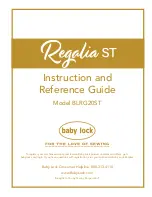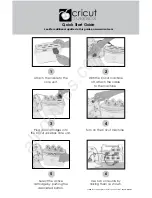
© 2008-2009, Brice Burrell
Page 17
Template Routing with the MFS System
Routing inlays, borders, cutouts, mortises, circles, curves and arcs can be very accurately done
with the MFS. I know my results are much better now that I'm using the MFS instead of the
wooden jigs and fixtures I've used in the past. Template routing with the MFS is a fairly
straightforward concept. However, there are a few things to keep in mind when deciding how to
use and set up this system as a routing template, I'll go over some of them in this section, as well
as show you how I use the MFS for my routing projects.
If you happen to be unfamiliar with what template routing is, I'll explain. It is using a jig, fixture or in
this case, the MFS profiles to guide a router's travel. The router must have a copying ring (guide
bushing) or a bit with a bearing to prevent the bit from cutting into the template as it travels. When
using a bit with a bearing, like a flush cut or pattern bit, the profiles can be set to the exact size
needed, whether it is a cutout or mortise. This really simplifies the setup.
However, using a pattern bit is not without its risks. The issue is with the bit accidentally cutting into
the template/profile. This can happen one of two ways.
First, while plunging the bit into the work piece, before the bearing can engage the template
(with the bearing still above the profile) it can't stop the bit from going astray and doing bad
things to your profile.
The second issue occurs if the bearing happens to land in the V slot in the edge of the profile.
You can run into this with smaller bits as they usually have small bearings that can fall into the
slot.
















































